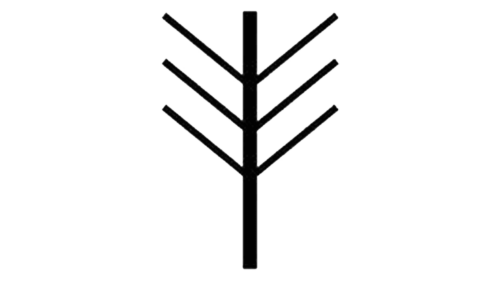Celtic symbols, with their intricate designs and deep meanings, have fascinated people for centuries. These symbols, emblematic of the rich cultural tapestry of the Celtic people, carry with them stories, beliefs, and the heritage of a civilization that, although largely absorbed into the modern world, still whispers its ancient lore. Among the myriad of symbols, a few stand out for their widespread recognition and significance. The Triskelion, with its three spirals, represents movement and progress; the Celtic Cross, a combination of the traditional Christian cross and the sun, symbolizes the synthesis of pagan and Christian beliefs; and the Claddagh, denoting love, loyalty, and friendship, is often worn as a token of affection or commitment. These symbols, while only a glimpse into the Celtic world, open a doorway to understanding the profound spiritual and cultural values of the Celts.
The significance of Celtic symbols cannot be overstated. They are not merely decorative but are imbued with deep philosophical, spiritual, and cultural connotations. These symbols served as a bridge between the earthly and the divine, offering protection, guidance, and wisdom to those who bore them. They were a language of the soul, conveying messages of unity, strength, and harmony with nature. Through these symbols, the Celts expressed their interconnectedness with the world around them, their reverence for the earth, and their belief in the cyclical nature of life.
One Celtic symbol that stands out for its unique beauty and depth of meaning is Beltane. This symbol is associated with one of the most important festivals in the Celtic calendar, marking the beginning of summer. Beltane is not just a symbol but a celebration of fertility, fire, and abundance. It encapsulates the joy and vitality of life, representing the awakening of the earth and the blossoming of new life. The festival of Beltane, traditionally celebrated on the 1st of May, involves lighting bonfires, dancing around Maypoles, and various rituals intended to bring fertility and protect from evil spirits. Features of Beltane:
- Meaning: Beltane symbolizes the peak of spring and the beginning of summer, embodying fertility, growth, and the awakening of life.
- Usage: Historically, it was celebrated with bonfires to protect against evil spirits, dances to ensure fertility, and rituals to honor the harmony between humans and nature.
- Symbolic Practices: The lighting of bonfires, dancing around the Maypole, and the crowning of the May Queen are central elements of Beltane celebrations.
An intriguing aspect of the Beltane festivities is the belief in the thinning of the veil between the physical world and the spirit world. It was thought that during Beltane, spirits and fairies could easily cross into the realm of the living, leading to various protective and propitiatory rituals to ensure peace and prosperity.
Incorporating the importance of Beltane and other Celtic symbols into modern culture highlights a yearning for connection with our ancestral roots and the natural world. These symbols, rich in meaning and history, offer insights into the values and beliefs of the Celts, emphasizing the significance of harmony with nature, community bonds, and the celebration of life’s cycles. The festival of Beltane, with its focus on renewal, growth, and the joy of life, serves as a reminder of the enduring legacy of Celtic symbols’ meanings and their relevance in today’s world.
List of Beltane Traditions:
- The lighting of bonfires symbolizes the return of light and warmth.
- Dancing around the Maypole represents fertility and the intertwining of life.
- The crowning of the May Queen symbolizes purity, growth, and the beauty of spring.
- Jumping over the bonfire for couples wishing for fertility.
These traditions and symbols, steeped in history and mystique, continue to enchant and inspire, offering a window into the soul of a people deeply connected to the natural rhythms of the earth.
Beltane Tattoo
The Celtic Beltane festival, with its rich tapestry of symbols and traditions, has inspired many to carry its essence into the realm of personal expression, notably through tattoos. A Celtic Beltane tattoo is not just a piece of art inked onto the skin; it is a profound statement of connection to the cycles of nature, fertility, and the vibrant energy of life renewing itself. These tattoos often incorporate elements like the Beltane fire, representing purification and renewal, and the Maypole, symbolizing the intertwining of the human with the divine and the earthly cycles of growth and decay.
The design of a Celtic Beltane tattoo can vary widely, from intricate knots and spirals that evoke the ancient Celtic connection to the earth and the cosmos to more literal representations of Beltane festivities, such as flames, flowers, or the iconic Maypole. The choice of design often reflects a personal journey or a deep-seated belief in the themes of rebirth, protection, and prosperity that Beltane embodies. For many, these tattoos are a way to honor their heritage, a celebration of life and the natural world, or a talisman to carry the protective and fertile energies of Beltane with them.
Furthermore, the act of choosing such a tattoo is itself a modern ritual, connecting the individual to a community of those who share a reverence for Celtic traditions and the symbolism of Beltane. It’s a mark of identity and a conversation starter, opening dialogues about ancient customs, spirituality, and the ways in which we find meaning in the cycles of life and nature. In this way, Celtic Beltane tattoos serve as a living, breathing testament to the enduring legacy of Celtic symbols and their capacity to inspire, protect, and renew.









